An implied condition for the safe carriage of goods at sea is that such cargoes shall be delivered, as far as possible, in as good condition and order as it was when received aboard.
One way to achieve safe carriage of goods by sea transport is to protect cargoes from the elements, by loading them inside hatches or cargo holds which are protected by hatch covers.
A hatch cover is a type of door that is used to seal an opening in a vessel or other type of structure. They are typically made of steel or aluminum and are used to protect the opening from the elements and to keep the interior of the structure safe and dry.
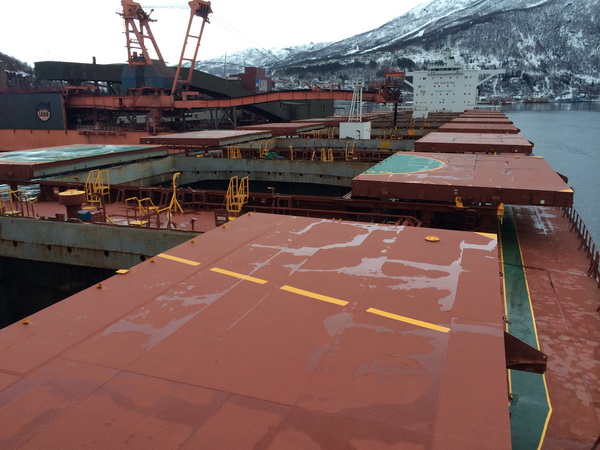
Hatch covers are an important part of a ship’s design, which apart from being used to seal off compartments to prevent ingress of water, can also be used to provide additional support for the ship’s structure. This writeup explains the importance of hatch covers, how the different types operate, and how hatch covers are maintained.
What Are Hatch Covers and Why Are They Important?
Hatch Covers are steel structures that guard the opening to the cargo hold and other lower parts of a ship to prevent the entry of water. Comparable to the lid on a box, they protect the cargo from damage and also provide support for the cargo stacked on top of the deck.
They are weatherproof and endure fluctuations in climatic conditions. Hatch Covers are frequently used in conjunction with the term “Coamings,” which refers to a vertically raised section of deck plating around the opening to a cargo hatch to prevent water entry.
Being an essential part of any vessel, hatch covers provide access to the interior of the ship and protect the cargo from the elements. They must be inspected regularly to ensure that they are in good condition and properly secured. If a hatch cover is damaged or loose, it can pose a serious safety hazard to the ship and its crew.
Hatch covers are typically made of steel or aluminum, and they are secured in place with large bolts or clamps. In some cases, hatch covers may also be fitted with weather-stripping or gaskets to further seal the opening and prevent water from entering the ship.
They also function as barricades to a ship’s internal structure by blocking the entry of water in extreme weather preventing the chances of corrosion developing inside.
What Are The Different Types Of Hatch Covers on ships?
There are many different types of hatch covers, each with its own unique benefits. Depending on the type of vessel and the trade it is involved in, the type of hatch cover required will vary. The main types of hatch covers are folding hatch covers, lift-away hatch covers, piggy-back hatch covers, side-rolling hatch covers, single-flap hatch covers, and stacking hatch covers.
Folding Hatch Covers
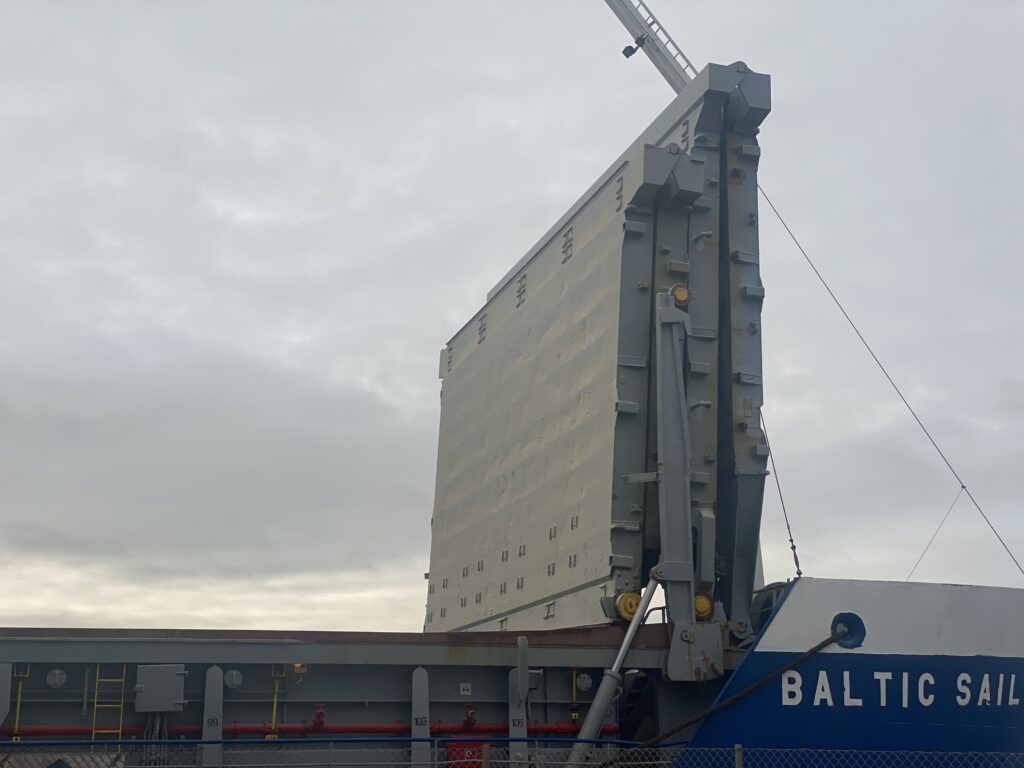
Folding hatch covers are commonly used on general cargo ships, multipurpose vessels, or smaller bulk carriers like Handysize, Handymax, and Supramax vessels. They are made up of two (or more) panels connected by hinges to form a folding pair.
The hatch cover is often made up of two folding pairs. One pair is stored at the hatch’s aft end, while the other pair is stored at the hatch’s forward end. Hydraulic cylinders act directly on the end hinge arms, which are connected at stools on the deck, to operate the folding pair.
The cover folds and the second panel, fitted with wheels, rolls on rails to a stowage position when the cylinders push the end panel up from the closed position. Semi-automatic locking devices that interact with the wheel arms typically secure the panels in the open position.
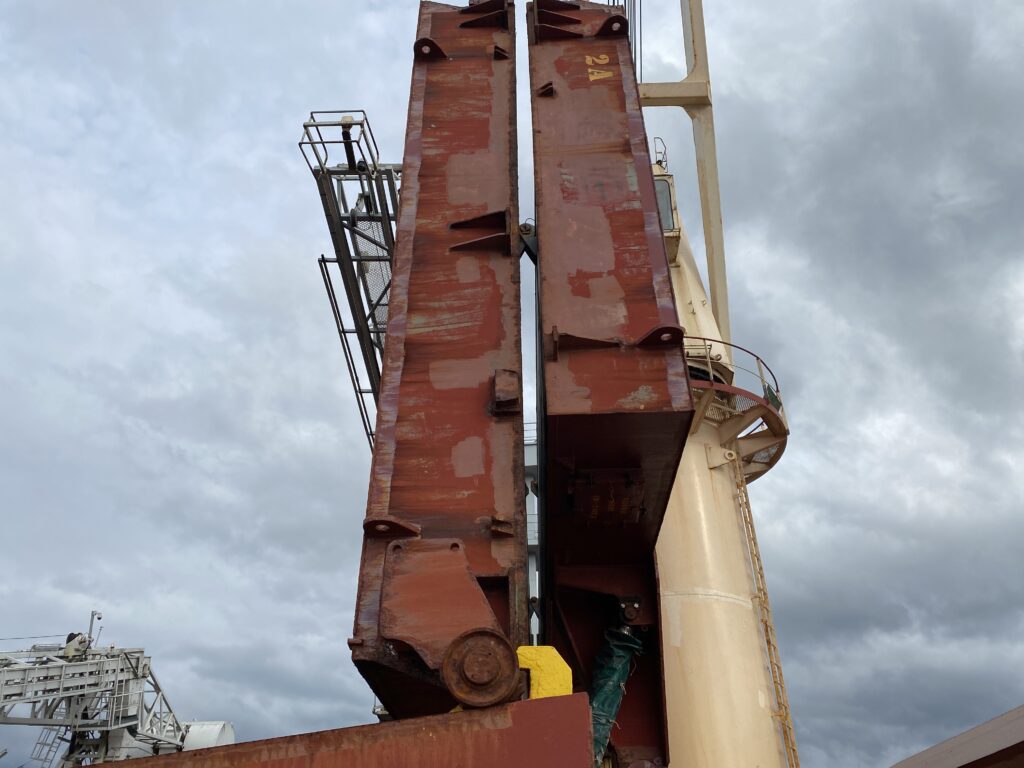
Lift-away Hatch Covers
Lift-away hatch covers are frequently employed on containerships and multipurpose boats to provide rapid and adaptable cargo handling operations. Either shoreside container cranes or the vessel’s own cranes are used to manipulate lift-away panels with a spreader. The panels may be stacked on the quay or ship’s deck.
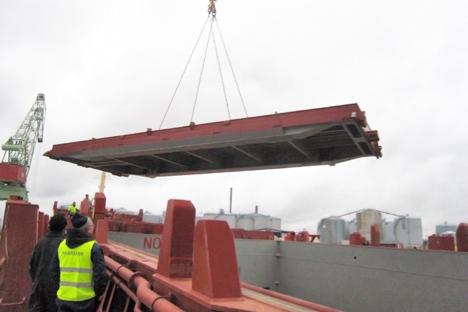
Piggy-back Hatch Covers
When there is not enough deck room to support folding or rolling hatch coverings, piggy-back hatch covers are employed.
Piggy-back hatch cover system consists of two panels, one of which is raised such that the other can roll underneath it and support the lifted panel as it rests on its “back.” Then, you can move both panels back and forth.
Side-rolling Hatch Covers
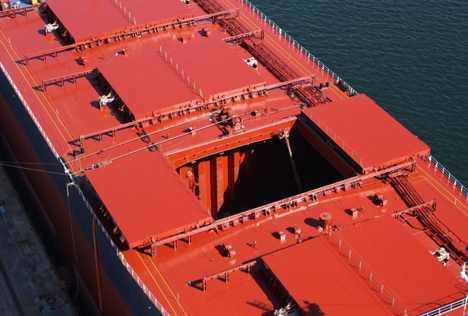
Large bulk carriers, such as Panamax and Capesize vessels, frequently use side-rolling hatch covers.
Side-rolling hatch covers are made up of two panels that roll sideways on a pair of transverse ramps.
This reduces the number of obstacles that the shore crane or other loading/unloading device operator must consider when loading and unloading.
Single-flap Hatch Covers
Single-flap hatch cover system is a hydraulically operated single-flap cover with a length of over 10 meters.
For safe operation, the design employs a short lever arm in conjunction with a powerful hydraulic system.
Two trailing arms hold the hatch cover in place when it is open. To accommodate long hatches, two single-flap hatch covers (one forward, one aft) can be supplied.
Stacking Hatch Covers
Stacking hatch covers for weather decks are typically hydraulic in operation, with the panels moving into stowage or closure positions in a predetermined sequence.
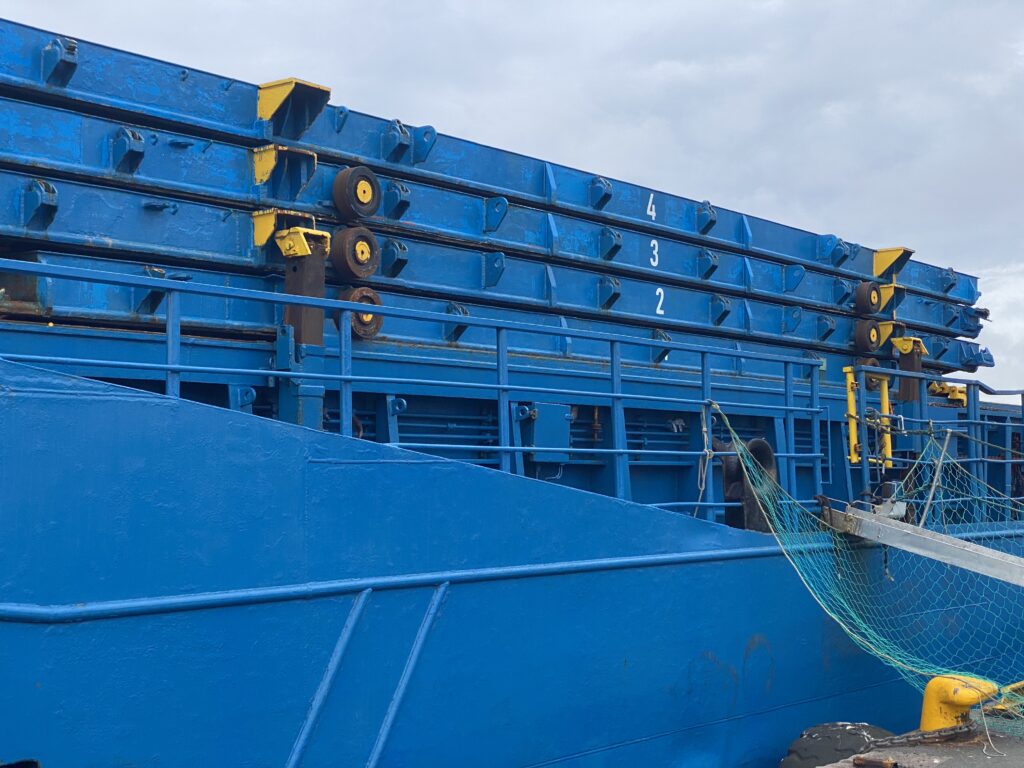
A set will consist of several panels, each of which is equipped with a towing device that can be connected to a continuous chain drive mechanism to move the panels to and from a stacking position.
The piggy-back system’s hoisting principles are used by the chain-driven stacking hatch cover system.
How Do You Maintain Hatch Covers?
Poor maintenance increases the likelihood of hatch covers failing and leaking during severe weather. While the hatch cover sealing rubber is an important barrier against seawater ingress, there are other structural arrangements also that keep water out of the cargo hold.
Cargo is protected from minor leaks by inner drainage channels that direct water away from the holds to drainage points, preventing cargo from becoming wet. It is therefore critical that not only the compression bar on which the hatch rubber rests but also the inner sill of the drainage channel, be in good condition.
Contact with the cargo or cargo equipment such as grabs, chutes, or chains can cause damage or warp to the inner sill. It is strongly advised that permanent repairs be carried out as soon as possible in these cases.
While the hatch cover seals themselves may be well maintained, cargo wetting may occur if other parts of the hatch cover sealing arrangement are in poor working order or compromised, exposing the ship to high-value claims. It is also critical that this drainage system does not become clogged, as if it does, the water will have nowhere to drain and may overflow into the cargo hold, causing damage to the cargo.
The water in this drainage channel should not pass through an open pipe or section of fire hose, but rather through a non-return valve installed at the endpoint. It should be noted that if a non-return valve is not installed, heavy seas can flow into the cargo hold in the opposite direction. To prevent drainage pipe blockage, these non-return valves should be removable or easily accessible for cleaning.
Hatch Covers On Ships Today
In the olden days when ships were constructed with wood, the hatch covers used to be made from wooden planks, beams and boards and covered with tarpaulin sheets. They had several drawbacks, so with changing times these wooden hatch covers have made way for steel. The size and shape of a ship determine the design of a hatch cover, but primarily they function in a manner that facilitates the opening and closing of the covers quickly to enable efficient cargo handling.
The major challenges and hurdles that had to be overcome over the last few decades have been associated with jumboizing. With the rapid expansion of larger ocean-going vessels, there was a need for engineers to devise solutions that allowed larger, heavier hatch covers to remain weathertight while at sea. Furthermore, well-engineered and well-designed hatch covers should allow for quick and safe operation while being low on maintenance and reliable.
Conclusion.
To properly maintain and operate a hatch cover, one must have a comprehensive awareness of both general design principles and the type-specific challenges and needs. It is possible for catastrophes to occur as a result of improperly maintained or incorrectly operated hatch covers, which can have an effect on the successful outcome of a voyage.
Even though taking care of hatch covers is not supposed to be difficult, it happens very frequently that maintenance on hatch covers is neglected, and hatch covers do not get the attention they deserve.
When it comes to ensuring that hatch covers achieve their intended function, which is to protect cargo from the elements, having a working knowledge of the various types of hatch covers and how to operate them goes a long way.
- Types of Gas Carriers as per IGC Code – April 22, 2025
- Wind-Assisted Propulsion Systems (WAPS): A Game Changer for Maritime Decarbonization – February 6, 2025
- 10 Boat Salvage Yards in California – January 25, 2025





